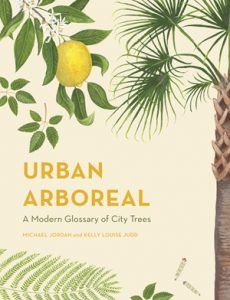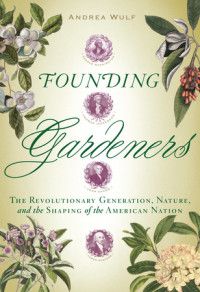
4 Books to Inspire Your City Garden
If you’ve ever tried your hand at gardening, you know it’s not for the weak. There’s a discipline to it, and a ruthlessness. Day lilies for example: I was digging some up the other day to make room for new plants. It’s a shame to kill these, I thought, maybe I’ll ask the neighbors if they’d like some. An hour later, covered in dirt and sweat, trying to pry the root system out of the ground and discovering tuber after tuber, I was contemplating the existential implications (and commercial availability) of napalm.
I’m more of a practical, rather than ornamental, gardener. There also needs to be purpose, so those day lilies are being replaced with native plants, to create a habitat for birds and beneficial insects. My favorite garden is, ultimately, a city garden—planted on a rooftop, in an abandoned field, a community plot or a small front yard surrounded by concrete sidewalks (with thyme planted in the cracks, of course). There’s nothing more beautiful than nature in the city.
Here’s a list of books about urban gardens & green spaces which I hope will inspire:
 Urban Arboreal: A Modern Glossary of City Trees by Michael Jordan
Urban Arboreal: A Modern Glossary of City Trees by Michael Jordan
Last summer on a cloudy, drizzly day, I was walking through Central Park—a park I’ve been in hundreds of times—when suddenly I was surrounded by the smell of fresh pine. I’d stumbled into the Arthur Ross Pinetum, located right above where 86th Street cuts through the park, an evergreen oasis containing 18 different species of pines. Cities are filled with places and things we are often too busy to notice, but which can bring us moments of joy if we take the time to discover them. Urban Arboreal visits vibrant cities like Buenos Aires, London, Seville, Washington D.C. and Delhi, encouraging us to explore “city trees and their stories in all their complexity.” With hand drawn illustrations by Kelly Louise Judd, this beautiful book doesn’t come out until September 2018, but is worth the pre-order.
 Farm City: The Education of an Urban Farmer by Novella Carpenter
Farm City: The Education of an Urban Farmer by Novella Carpenter
This is a book that opens up all the brilliant possibilities of city gardens. Carpenter, who just restarted her blog, built the farm in an empty lot in Oakland, California and published her book about the experience in 2010. Since then she’s written two more books. The first is The Essential Urban Farmer, a how-to manual she coauthored with Willow Rosenthal. The other, Gone Feral: Tracking My Dad Through the Wild, is a memoir of sorts in which she revisits her relationship with her father—“a back-to-the-land homesteader and troubled Korean War veteran,” who influenced her more than she wanted to admit. Carpenter is one of the most honest writers I’ve ever encountered. She doesn’t romanticize the challenges of farming, yet remains committed to the life she chose.
Green Escapes: The Guide To Secret Urban Gardens by Toby Musgrave
Like Urban Arboreal, it explores nature in —this time secret jewel box gardens and unexpected green spaces you won’t find in your typical tourist guide. As is typical with Phaidon, this book is filled with lush photos so that, even if you never take that trip to Singapore, you can still find plenty on inspiration within its pages for creating your own private paradise.
 The Brother Gardeners: Botany, Empire and the Birth of an Obsession and Founding Gardeners: The Revolutionary Generation, Nature, and the Shaping of the American Nation, both written by Andrea Wulf
The Brother Gardeners: Botany, Empire and the Birth of an Obsession and Founding Gardeners: The Revolutionary Generation, Nature, and the Shaping of the American Nation, both written by Andrea Wulf
These are American history books that explore the significance and historical context of gardens in the Colonial, Revolutionary, and Federalist periods of American History. If you’re a history buff and a gardener, just stop reading and go find these books—the titles should be enough. For everyone else: Wulf introduces us to John Bartram, a colonial farmer who explored the east coast of America collecting seeds which he then sold in both the colonies and England, spurring a botany craze. You can still visit his house and the adjacent gardens which still exists , an island of green surrounded on all sides by the concrete, brick and asphalt of Philadelphia. Her second book, Founding Gardeners, focuses on Washington, Jefferson and Madison, “telling the story of the revolutionary generation from the unique perspective of their lives as gardeners, plant hobbyists, and farmers”. She describes how these men built the estates which thousands of people still visit today—Mt. Vernon, Monticello, Montpelier and Washington D.C.—without sidestepping the fact that they did so through the labor of enslaved people. While neither book focuses solely on city gardens, they do provide a fascinating, and surprisingly relevant, look at gardening and agriculture in the United States.

















